Complete Solutions to Problems Based On Different Concepts of chapter WAVE OPTICS of Class 12 book with complete answers and questions
| Class 12 | PHYSICS |
| Chapter | WAVE OPTICS |
| A2Z | Problems Based On Different Concepts |
| Number Of Questions | 39 |
| Academic Year | 2023-24 |
A diffraction grating is ruled with 600 lines per millimetre. When monochromatic light falls normally on the grating, the first order diffracted beams are observed on the far side of the grating each making an angle of `15^@` with the normal to the grating.
What is the frequency of the light?
View SolutionTwo point sources separated by 2.0 m are radiating in phase with `lambda = 0.50 m`. A detector moves in a circular path around the two sources in a plane containing them. How many maxima are detected?
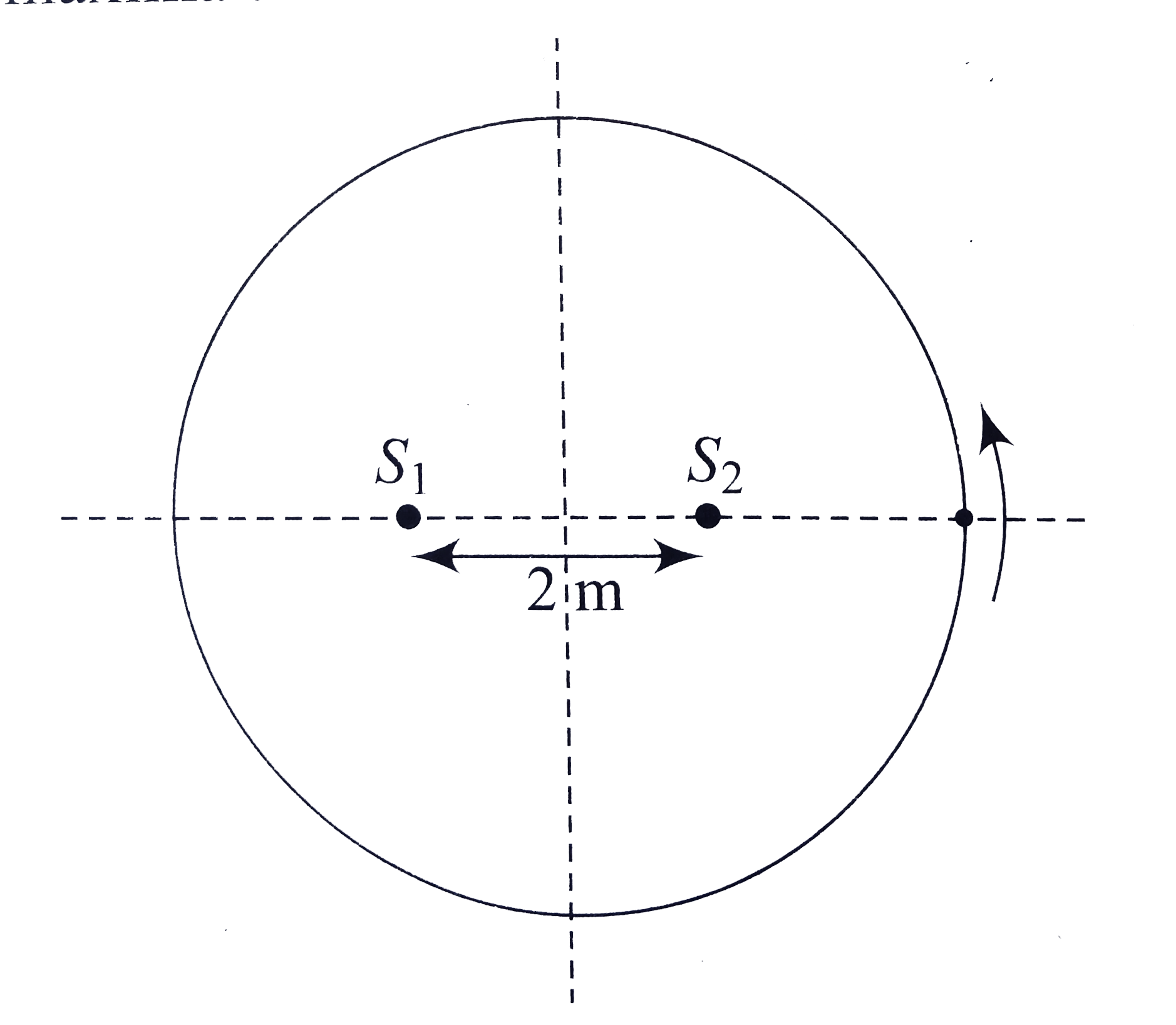
View SolutionIn YDSE, light of wavelength `lamda = 5000 Å` is used, which emerges in phase from two slits distance `d = 3 xx 10^(-7) m` apart. A transparent sheet of thickness `t = 1.5 xx 10^(-7) m`, refractive index `n = 1.17`, is placed over one of the slits. Where does the central maxima of the interference now appear from the center of the screen? (Find the value of y?)
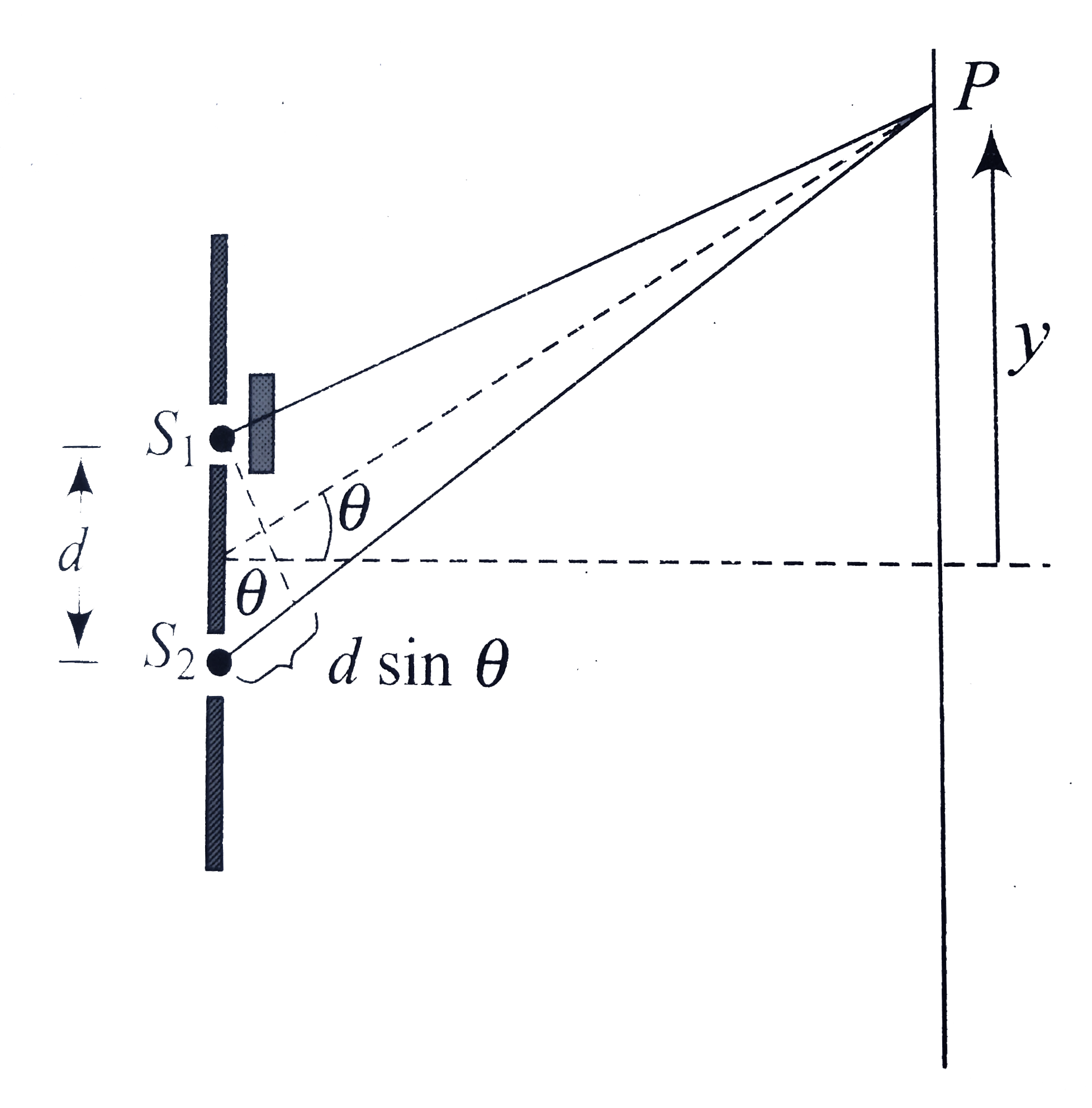
View SolutionA double-slit experiment is immersed in a liquid of refractive index `1.33`. It has slit separation of 1` mm` and distance between the plane of slits and screen is `1.33 m`. The slits are illuminated by a parallel beam of light whose wavelength in air is `6830 Å`. Then the fringe width is
View SolutionIn a modified Young's double-slit experiment, a monochromatic uniform and parallel beam of light of wavelength `6000 Å` and intensity `(10//pi)` W `m^(-2)` is incident normally on two circular apertures A and B of radii 0.001 m and 0.002 m, respectively. A perfectly transparent film of thickness `2000 Å` and refractive index 1.5 for the wavelength of `6000 Å` is placed in front of aperture A (see the figure). Calculate the power (in mW) received at the focal spot F of the lens. Then lens is symmetrically placed with respect to the aperture. Assume that 10% of the power received by each aperture goes in the original direction and is brought to the focal spot.
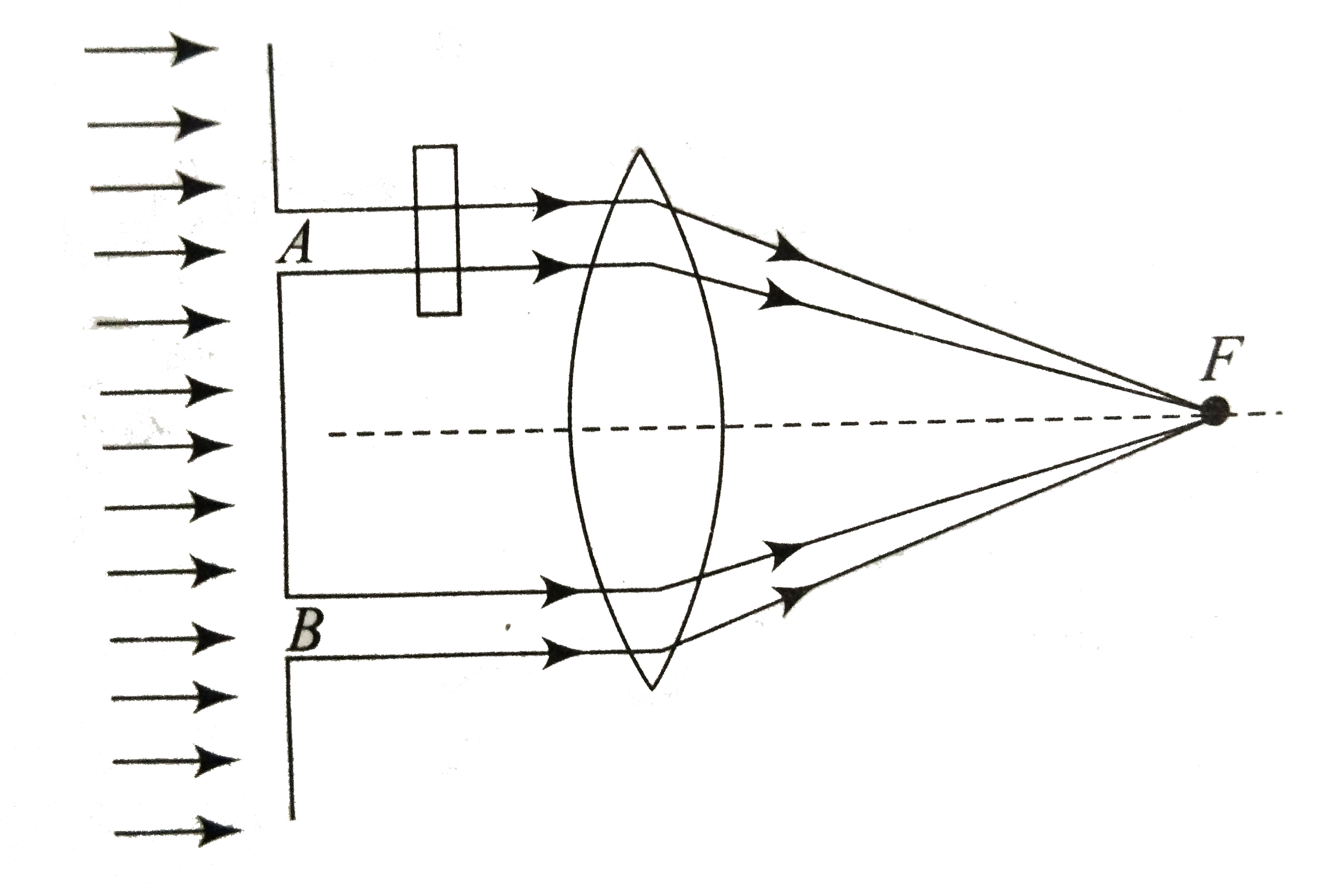
View SolutionA `30mm` wide diffraction grating produces a deviation of `30^@` in the second order principal maxima. The wavelength of light used is `600nm`. The total number of slits in the grating is:
View SolutionA screen is placed at `50cm` from a single slit, which is illuminated with `600nm` light. If separation between the first and third minima in the diffraction pattern is `3.0mm`, then width of the slit is:
View SolutionIf in single slit diffraction pattern, first minima for red light `(600nm)` coincides with first maxima of some other wavelength `lambda`, then `lambda` would be
View SolutionA laser beam of `10mW` power and wavelength `700nm` has aperture of `3mm`. If it is focused by a lens of focal length `5cm`, the intensity of image is
View SolutionFor the situation of the previous question, find the maximum distance at which the eye would be able to resolve the two headlights of a car which are at a distance of `1.5m`.
View SolutionA ray of unpolarised light is incident on a glass plate at the polarizing angle if incident `57^@`. Now,
View SolutionFollowing figures shows sources `S_1` and `S_2` that emits light of wavelength `lambda` in all directions. The sources are exactly in phase and are separated by a distance equal to `1.5lambda`. If we start at the indicated start point and travel along path 1 and 2, the interference produce a maxima all along
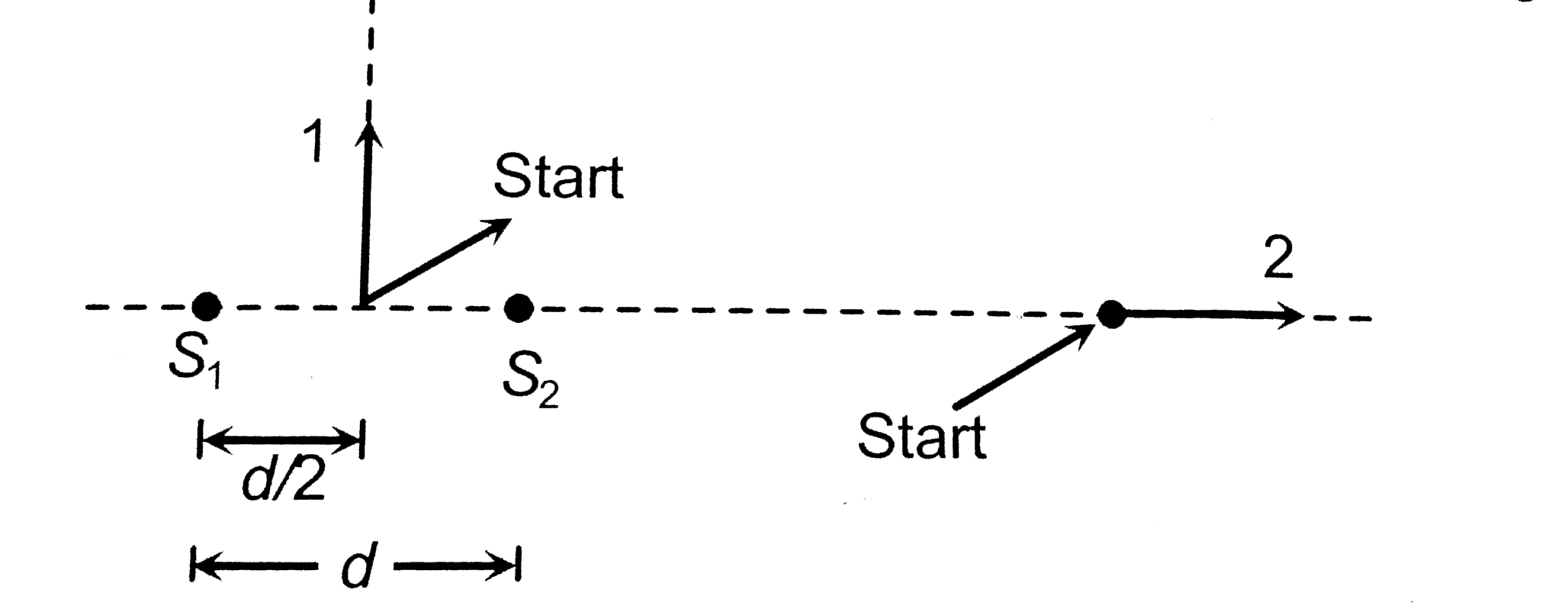
View SolutionWhite light is used to illuminate the two slits in a Young's
double slit experiment. The separation between the slits is b and the screen is at
a distance `d(gtgtb)` from the slits. At a point on the screen directly in front of
one of the slits, certain wavelengths are missing. Some of these missing wavelength are
View SolutionIn the adjacent diagram, CP represents a wavefront and AO & BP, the corresponding two rays. Find the condition on `theta` for constructive interference at P between the ray BP and reflected ray OP.

View SolutionA ray of light intensity I is incident on a parallel glass-slab at a point `A` as shown in figure. It undergoes partial reflection and refraction. At each reflection `25%` of incident energy is reflected. The rays `AB` and `A^(')B^(')` undergo interference. The ratio `I_(max)//I_(min)` is
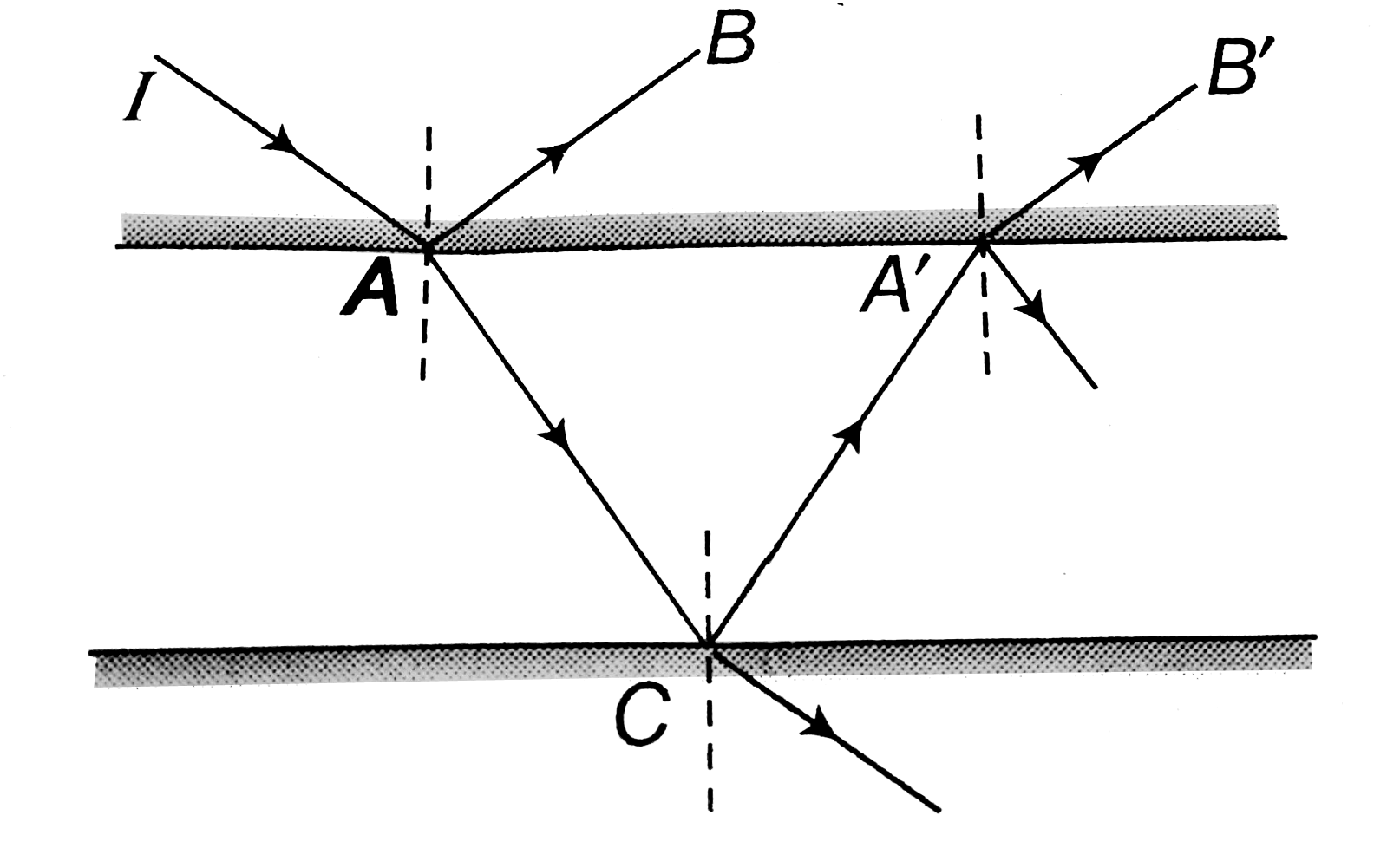
View SolutionIn an interference arrangement similar to Young's double-slit experiment, the slits S_1 and S_2 are illuminated with coherent microwave sources, each of frequency 10^6 Hz. The sources are synchronized to have zero phase difference. The slits are separated by a distance d=150.0 m. The intensity I (theta) is measured as a function of theta, where theta is defined as shown. If I_0 is the maximum intensity, then I (theta) for 0lethetale90degree is given by
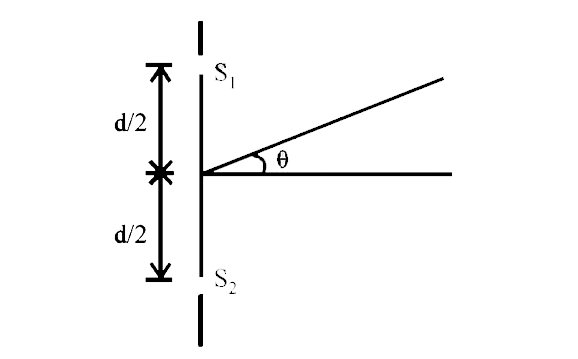
View SolutionA light of wavelength `5890Å` falls normally on a thin air film. The minimum thickness of the film such that the film appears dark in reflected light is
View SolutionIn a standard Young's double-slit experiment with coherent light of wavelength 600 nm, the fringe width of the fringes in the central region (near the central fringe, `P_(0)`) is observed it to be 3 mm. An extremely thin glass plate is introduced to be displaced by 11 mm. Another thin plate is placed before the second slit and it is observed that the fringe are now displaced by an additional 12 mm. If the additional optical path lengths introduced are `Delta_(1)` and `Delta_(2)` then
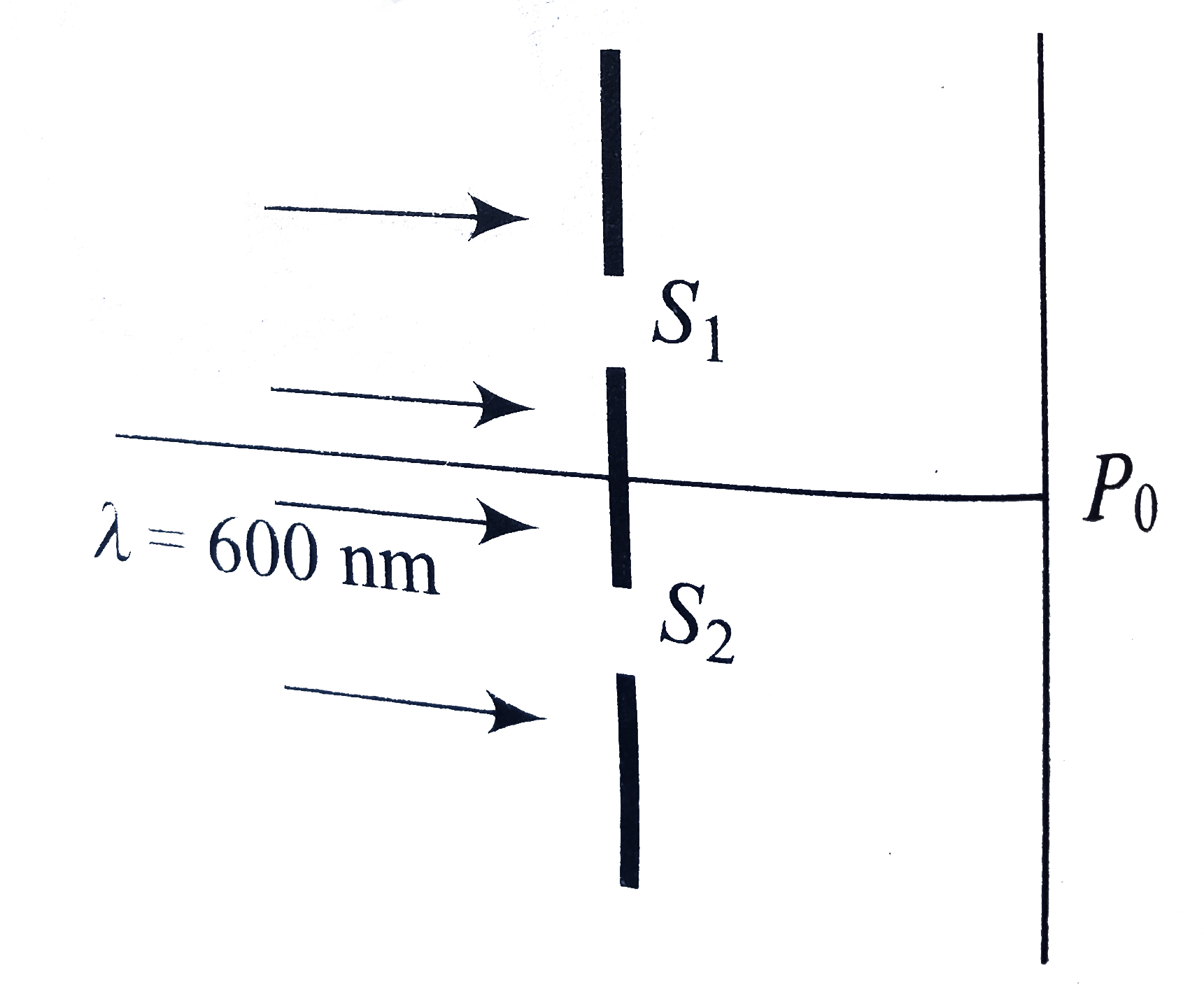
View SolutionIn a Young's double slit experiment, 12 fringes are observed to be formed in a certain segment of the screen when light of wavelength 600nm is used. If the wavelength of light is changed to 400nm, number of fringes observed in the same segment of the screen is given by
View SolutionIn Young's double-slit experment, the frist maxima is observed at a fixed point P on the screen. Now, the screen is continously moved away from the plane of slits. The ratio of intensity at point P to the intensity at point O (center of the screen)
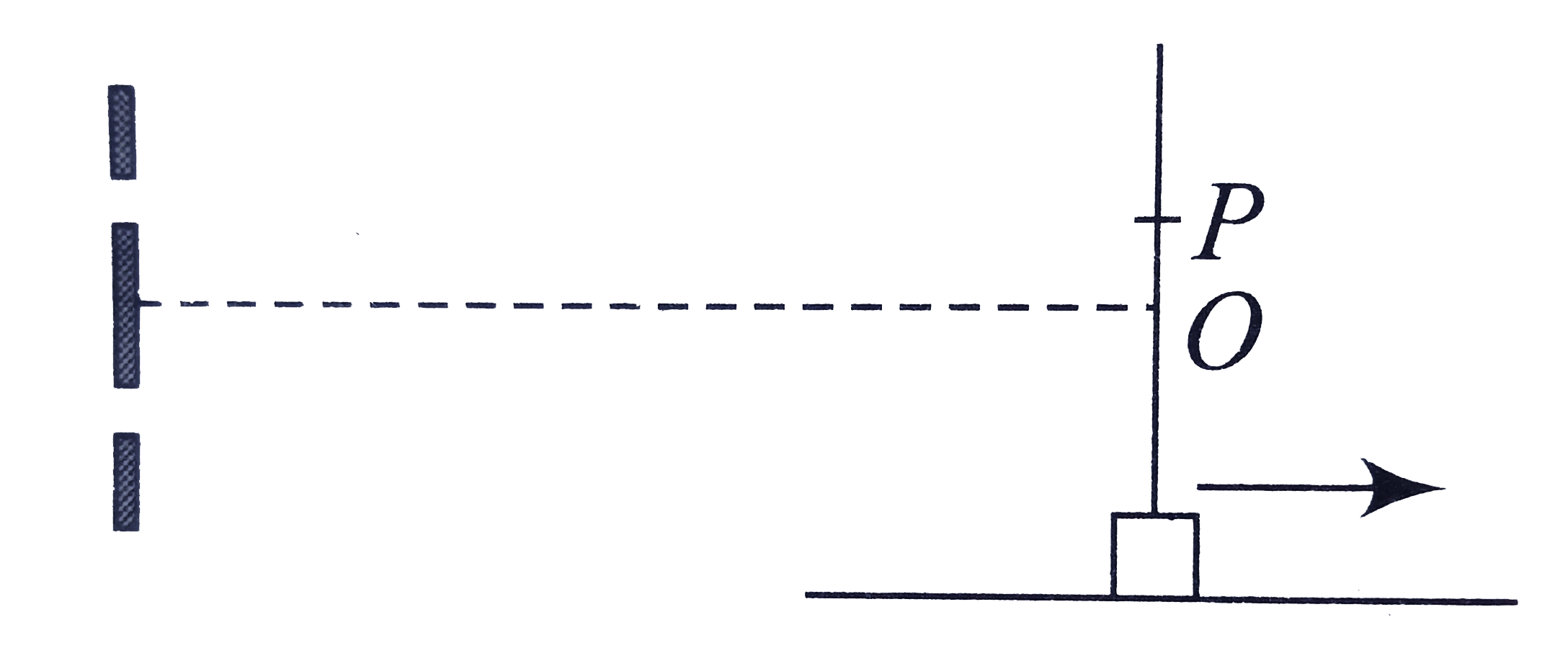
View SolutionIn Young's doulbe-slit experiment the separation between two coherent sources `S_(1)` and `S_(2)` is d and the distance between the source and screen is D. In the interference pattern, it is found that exactly in front of one slit, there occurs a minimum. Then the possible wavelengths used in the experiment are
View SolutionIn the figure is shown Young's double slit experiment. Q is the position of the first bright fringe on the right side of O. P is the `11^(th)` bright fringe on the other side, as measured from Q. If the wavelength of the light used is `600 nm`. Then `S_(1)B` will be equal to
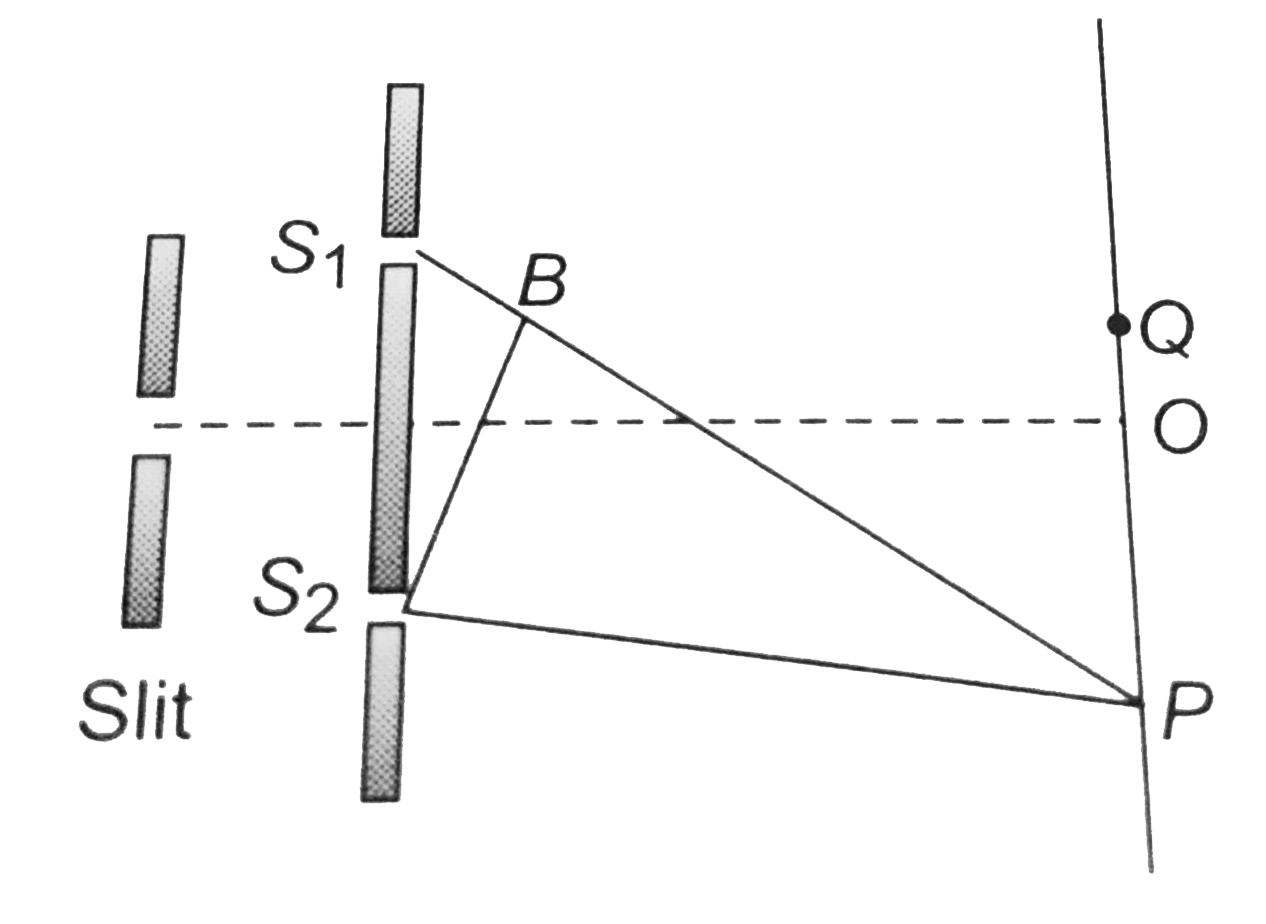
View SolutionThe intensity at the maximum in a Young's double slit experiment is `I_0`. Distance between two slits is `d=5lambda`, where `lambda` is the wavelength of light used in the experiement. What will be the intensity in front of one of the slits on the screen placed at a distance `D=10d`?
View SolutionA monochromatic beam of light fall on YDSE apparatus at some angle (say `theta`) as shown in figure. A thin sheet of glass is inserted in front of the lower slit `s_(2)`. The central bright fringe (path difference `= 0`) will be obtained
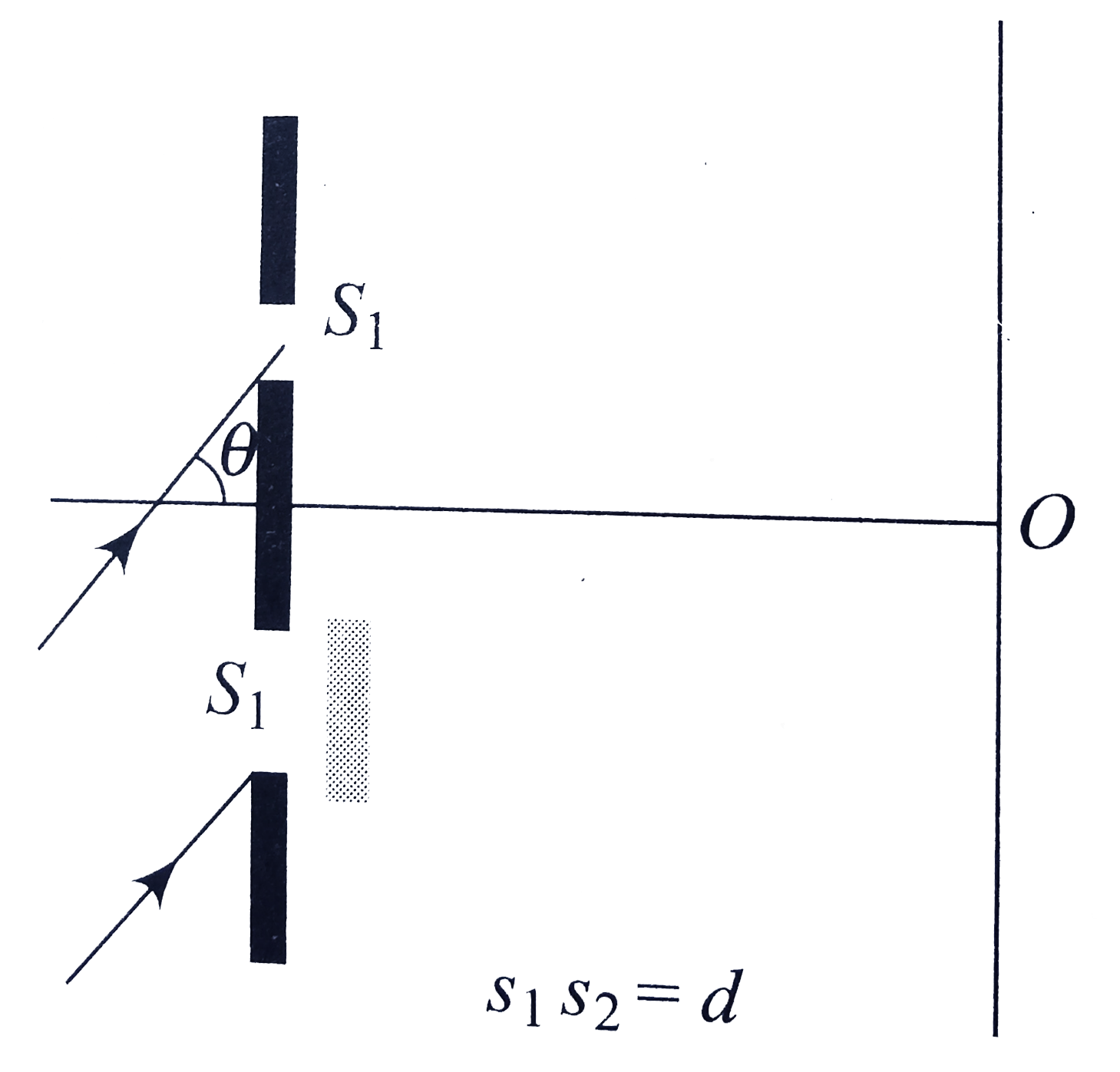
View SolutionTwo ideal slits `S_(1)` and `S_(2)` are at a distance `d` apart, and illuninated by light of wavelength `lambda` passing through an ideal source slit `S` placed on the line through `S_(2)` as shown. The distance between the planes of slits and the source slit is `D.A` screen is held at a distance `D` from the plane of the slits. The minimum value of `d` for which there is darkness at `O` is `(dlt lt D)`
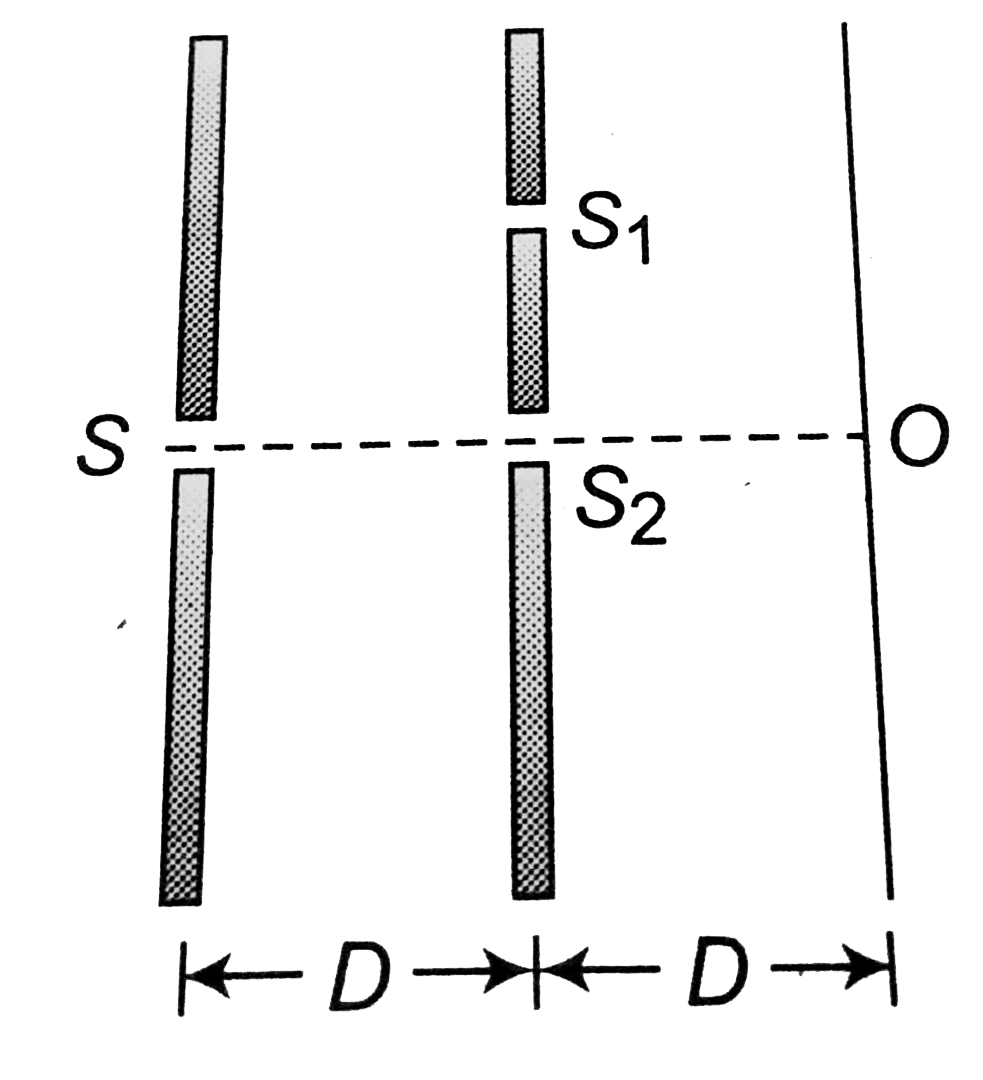
View SolutionIn double slit experiment fringes are obtained using light of wavelength `4800 Å` One slit is covered with a thin glass film of refractive index. `1.4` and another slit is covered by a film of same thickness but refractive index `1.7`. By doing so, the central fringe is shifted to fifth bright fringe in the original pattern. The thickness of glass film is
View SolutionA beam with wavelength `lambda` falls on a stack of partially reflecting planes with separation `d`. The angle `theta` that the beam should make with planes so that the beams reflected from successive planes may interfere constructively is (where n=1, 2, ...)
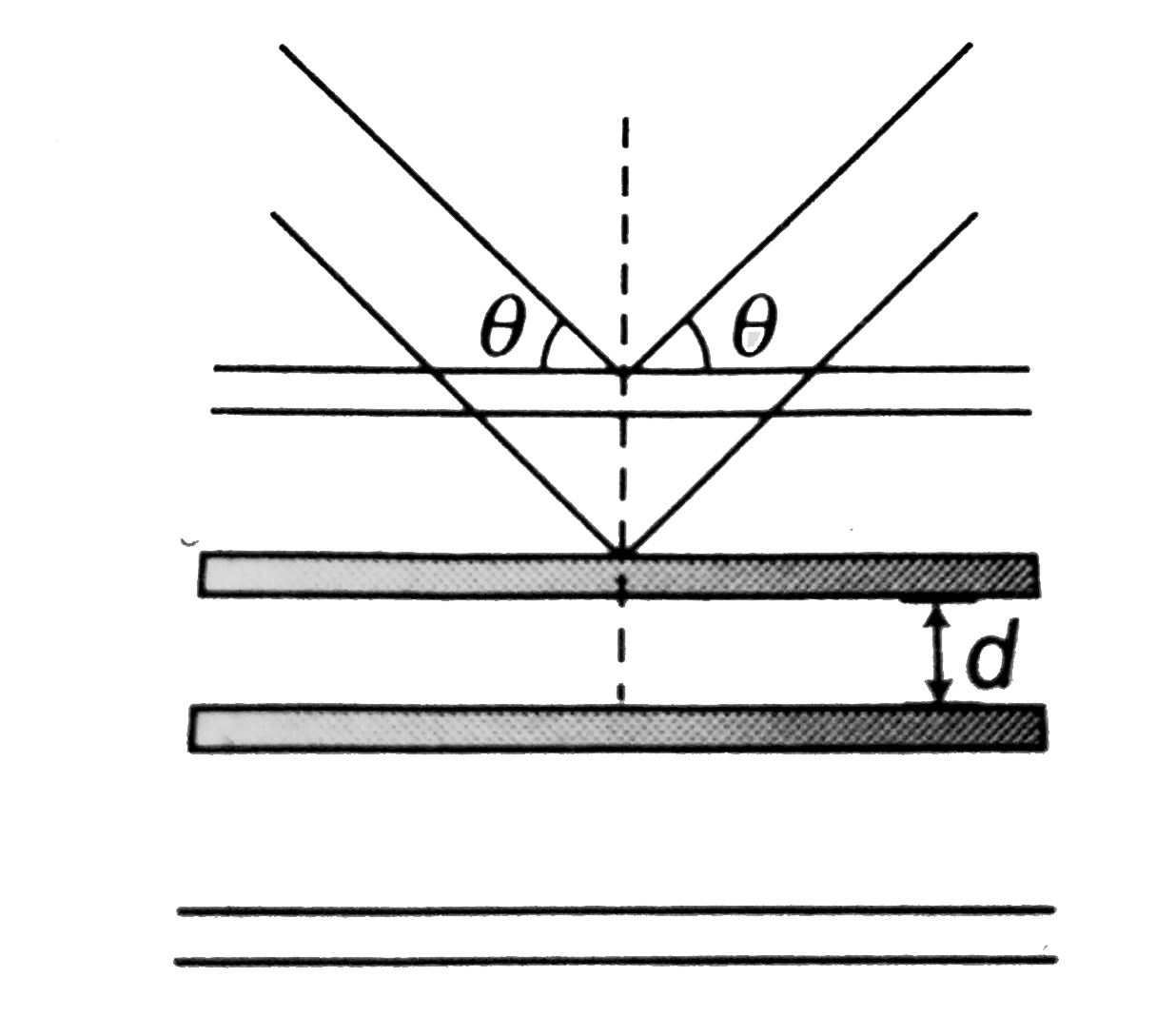
View SolutionWhite light may be considered to be mixture of waves of `lambda` ranging between `3900 Å` and `7800 Å`. An oil film of thickness `10,000 Å` is examined normally by the reflected light. If `mu=1.4`, then the film appears bright for
View SolutionA `20cm` length of a certain solution causes right-handed rotation of `38^@`. A `30cm` length of another solution causes left-handed rotation of `24^@`. The optical rotation caused by `30cm` length of a mixture of the above solutions in the volume ratio `1:2` is
View SolutionA beam of plane polarized light falls normally on a polarizer of cross sectional area `3xx10^-4m^2`. Flux of energy of incident ray in `10^-3W`. The polarizer rotates with an angular frequency of `31.4 rad//sec`. The energy of light passing through the polarizer per revolution will be
View SolutionIn YDSE, bichromatic light of wavelengths 400 nm and 560 nm
are used. The distance between the slits is 0.1 mm and the distance between the
plane of the slits and the screen is 1m. The minimum distance between two
successive regions of complete darkness is
View SolutionCoherent light is incident on two fine parallel slits `S_(1)` and `S_(2)` as show in fig. If a dark fringe occurs at P, which of the following gives possible phase difference for the light waves arriving at P from `S_(1)` and `S_(2)` ?

View SolutionThe intensity at the maximum in a Young's double slit experiment is `I_0`. Distance between two slits is `d=5lambda`, where `lambda` is the wavelength of light used in the experiement. What will be the intensity in front of one of the slits on the screen placed at a distance `D=10d`?
View SolutionIn Young's double-slit experiment `d//D = 10^(-4)` (d = distance between slits, D = distance of screen from the slits) At point P on the screen, resulting intensity is equal to the intensity due to the individual slit `I_(0)`. Then, the distance of point P from the central maximum is `(lambda = 6000 Å)`
View SolutionTo produce a minimum reflection of wavelength near the middle of visible spectrum (550 nm), how thick should a coating of `MgF_(2) (mu = 1.38)` be vaccum-coated on a glass surface?
View SolutionA thin film of refractive index 1.5 and thickness `4 xx 10^(-5)` cm is illuminated by light normal to the surface. What wavelength within the visible spectrum will be intensified in the reflected beam?
View SolutionA plane wave of monochromatic light falls normally on a uniform thin film of oil which covers a glass plate. The wavelength of source can be varied continuously. The destructive interference is observed for `lambda = 5000 Å` and `lambda = 1000 Å` and for no other wavelength in between. If `mu` of oil is 1.3 and that of glass is 1.5, the thickness of the film will be
View SolutionA parallel monochromatic beam of light is incident normally on a narrow slit. A diffraction pattern is formed on a screen placed perpendicular to the direction of the incident beam. At the first minimum of the diffraction pattern, the phase difference between the rays coming from the two edges of the slit is
View SolutionIn a double slit experiment, interference is obtained from electron waves produced in an electron gun supplied with voltage V. If `lambda` is wavelength of the beam, D is the distance of screen, d is the spacing between coherent source, h is Planck's constant, e is charge on electron and m is mass of electron, then fringe width is given as
View Solution
Problems Based On Different Concepts questions and complete solutions for chapter WAVE OPTICS of A2Z PHYSICS (HINGLISH) of Class 12